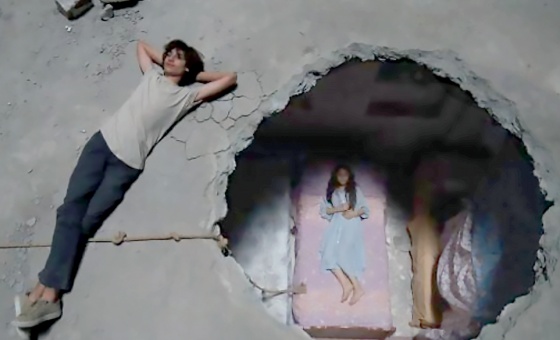This is the last article you can read this month
You can read more article this month
You can read more articles this month
Sorry your limit is up for this month
Reset on:
Please help support the Morning Star by subscribing here
The Legend of Sleepy Hollow
Salisbury Playhouse
PLAUDITS to the Devon-based Tilted Wig touring company for taking this ambitious adaptation of Washington Irving’s gothic American horror story around the country — and for giving their all on stage.
Fewer plus points, however, for the quality of their offering, which although decent in parts has about it the faint whiff of an amateur dramatics production, complete with rather in-and-out accents and an occasionally wobbly set.
By hurling us through time and space, writer Philip Meeks tries to tell the tale of Ichabod Crane, recently arrived in a bewitched 18th-century American-Dutch settlement to find a town paralysed by the strange legend of a headless horseman.
Occasionally things get creepy, and sometimes the intrigue is gripping. Yet there are so many switchbacks, so many mini scene changes, and so much moving backwards and forwards over the years that it all becomes unnecessarily confusing, especially for anyone who doesn’t already know the story.
Despite the experienced presence of two former Coronation Street stalwarts — Wendi Peters as the immortal widow Mariette Papenfuss and Bill Ward as the sinister town headman Baltus Van Tassel — nothing the actors can do has much effect on the general lack of clarity.
The best bits are chiefly connected with the work of illusions director Filipe Carvalho, including a dramatic dream sequence in which Crane finds himself in bed with his Sleepy Hollow love interest, Katrina Van Tassell (Rose Quentin) — only to see her transformed by some unfathomably homo-erotic sleight of hand into the form of Brom Van Brunt (Lewis Cope), Crane’s rival for her affections.
Much that is good also emanates from Sam Jackson’s portrayal of Crane as a supremely logical, forward-thinking character who’s bravely willing to challenge the superstitions of the townsfolk yet also annoyingly supercilious and perhaps not quite the paragon of virtue he appears to be.
Otherwise, the complicated framework of the whole set-up hardly helps the audience engage with the story, and the over-riding feeling is that it would be a lot better for a bit of simplicity.
Even after the interval, when one might expect the labyrinthine scene-setting to have come to an end, still more background material is rolled out, including a long storytelling section which, though well done, comes too late in the proceedings and does little more than make the play drag.
Sometimes it pays to keep things on the straight and narrow, and here is a prime example of the dangers of well-intentioned over-complication.










